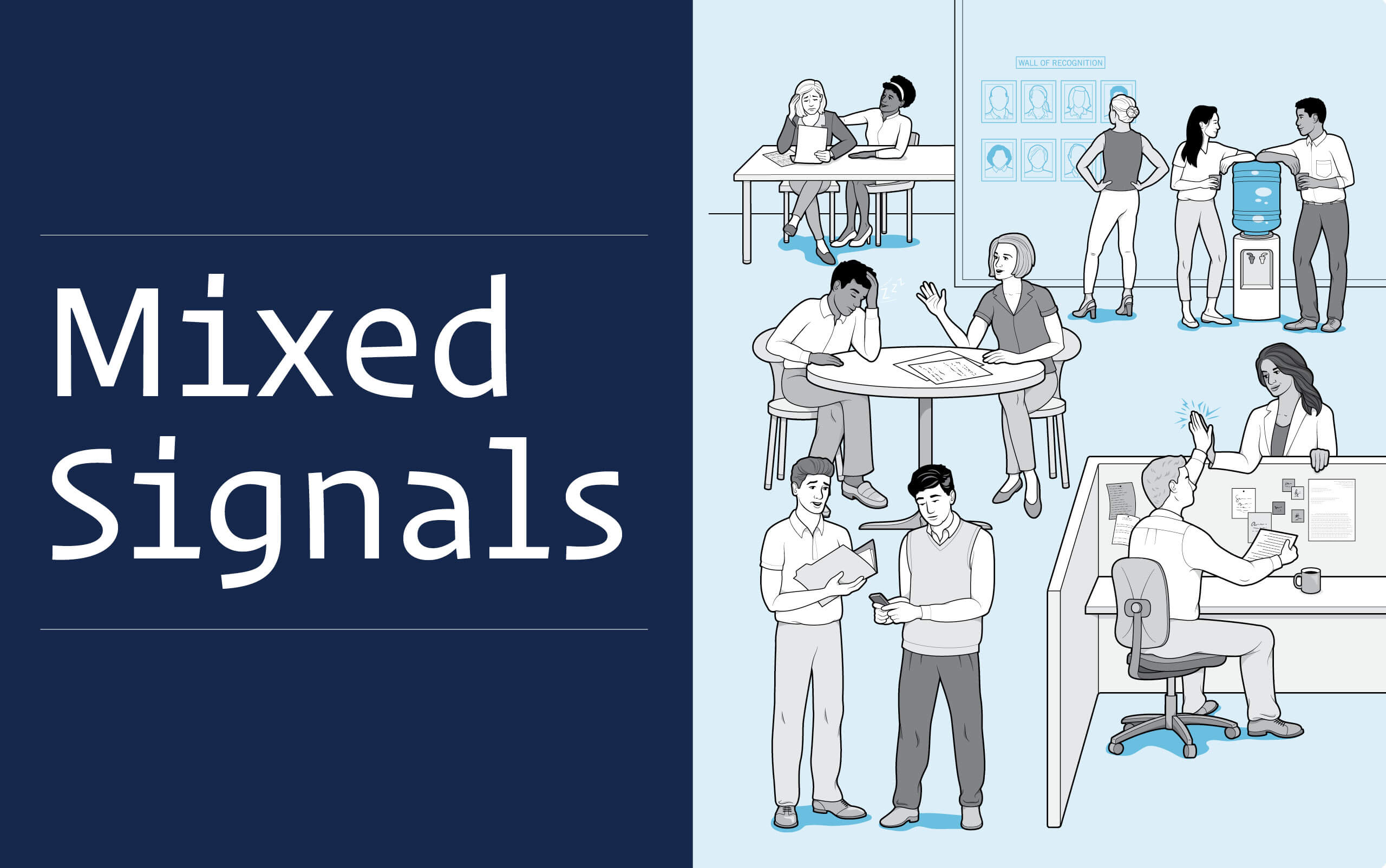Ten things every manager should know about nonverbal behavior
Managers influence the people they work with every day—not only through their words and decisions but also through their nonverbal behaviors. Whether they’re aware of it or not, their posture, facial expressions, and reactions can all serve to build trust and enhance working relationships when handled well. But the same nonverbal cues can also undermine trust and cause problems in the long run when handled poorly. Here are ten things to keep in mind when interacting with direct reports.
BACKGROUND:
In 1960, psychologist Robert Rosenthal conducted a landmark research study on the role of expectations on performance. He discovered that when rats in a maze were treated more kindly and encouragingly by examiners, they were able to find solutions more quickly and remember them longer.
Rosenthal was then curious to see whether an examiner’s biases could influence the performance of a group of rats at the same skill level. When examiners were told beforehand that an assigned rat was particularly bright and could solve mazes quickly, they were more inclined to treat the rat encouragingly. When examiners were told that a rat was dull and had little ability, they held low expectations and treated the rat worse. Despite there being no difference between the rats at first, the “maze bright” and “maze dull” rats soon began to diverge significantly in their performance. The examiners’ expectations had a direct influence on performance.
This finding was tested again on schoolchildren. It was found that “bright” students were treated differently by their teachers, performed better in school, raised their hands more often, and demonstrated an increase in IQ of 27 points after a year of study when compared to their peers. Rosenthal’s research had a profound effect on the study of psychology, popularizing the idea of the “self-fulfilling prophesy.”
As Rosenthal demonstrated, unconscious behaviors can have a significant effect on others—how they feel about themselves, how they perform, and whether they feel validated and included.
1—Listening
Many people struggle with feeling unheard at work. It’s important for managers to truly focus on others while they are speaking: Make eye contact and be sure not to look at a computer or phone screen.
2—Liking and valuing others
It’s important for managers to engage with others in a way that is relatable and collaborative. One way is through synchrony—simultaneous action of two or more people at once. This could be as simple as eating lunch at the same time. Mimicry is similar. People who are close have a natural tendency to mimic: If someone moves closer to the table, another will follow suit shortly after. Finally, managers should prioritize their listening and conversational turn-taking skills.
3—Intelligence
As a manager you want to be able to detect intelligence in others in addition to conveying intelligence, which will increase others’ perception of how capable you are. Behaviors that convey intelligence involve engagement. When we appear engaged by what others are doing or saying, it tends to reflect our intelligence and people’s perception of our competence. Affirmative paralinguistic utterances (such as “mm-hm” and “yes”) can accordingly signal intelligence.
4—Power
Conveying power through nonverbal behavior is simple. The real question is whether it is appropriate to express power in a given situation. Managers should assess whether the time is right to demonstrate a more authoritative tone and then seek to use an upright, expansive posture and speak for longer. Be careful, though: long speaking time can also be associated with those who struggle with self-regulation. Have something substantive to say.
5—Building trust & consensus
Signaling that you trust and can be trusted by others is easy. Managers should express an open body posture and look at people while they’re speaking. To make sure everyone feels included, make eye contact with those who have not spoken yet and give them a chance to contribute.
6—Using the wisdom of the crowd
Making sense of others’ thoughts, feelings, and intentions can take up quite a bit of mental bandwidth. But as you practice, your judgments will improve. Additionally, it can help to distribute the burden of judgment to a small group. Asking trusted advisors and averaging their impressions of a situation or another person can help you tap the wisdom of the crowd to achieve a more accurate overall assessment.
7—Detecting deception in strategic and ordinary operations
Detecting deception is difficult. On average, managers are only slightly better than chance unless they have had specific training. Open and honest communication is important, so lies—even minor ones—can damage culture and productivity. When a person lies about something inconsequential, they experience little to no fear of consequence, inner conflict, or guilt. As such, the lie is not revealed through body language. However, most of the time people feel at least a little inner conflict when they say something that isn’t true. Look out for changes in baseline behavior (like shifting uncomfortably) or seemingly fake facial expressions (like fake smiles) that don’t seem to correspond to the context.
8—Status (Respect And Admiration Of Others)
Like power, conveying status through nonverbal behavior is easy to do—but it’s important to note the difference between power and status. Power is defined as access to and control over people and resources. Status is the respect and admiration of others. The same nonverbal cues that can indicate power should be used in accordance with an individual’s management style—pick those that work best for you. There are also two specific behaviors that convey status. First, the use of deliberate, clear gestures while speaking. And second, the ability to laugh and make others laugh.
9—Avoiding resting “cranky” face
Has anyone ever seemed nervous around you? Do people think you disapprove of them even when you don’t? Many of us can look judgmental or upset as we listen to others. Pay attention to your eyes: Make sure you aren’t unconsciously squinting or glaring. By placing your thumb and forefinger on your chin, others’ perceptions of your furrowed brow can be converted from a face of judgment to a face of engagement.

10—Avoiding microaggressions
Scowls and eye rolls are obvious negative behaviors. But the absence of positive behavior is also a microaggression. Smiling, looking at, and speaking with
others all equally signal “I like working with you.” Avoiding positive cues can send a negative message.


